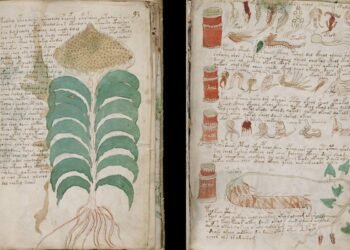Archaeologists from Time Team, in collaboration with the Universities of Chester and York, have revealed that Bodbury Ring, a hillfort located at the southern tip of Bodbury Hill in Shropshire, England, is significantly larger than previously believed. This discovery, facilitated by advanced Light Detection and Ranging (LiDAR) technology, reveals that the hillfort encompasses the entire ridgetop of Bodbury Hill, making it six times larger than earlier estimations.
Hillforts, primarily constructed during the Celtic Iron Age though some date back to the Bronze Age, were strategic fortifications that followed the contours of hills, typically featuring earthworks, stone ramparts, stockades, defensive walls, and external ditches. Bodbury Ring is a univallate hillfort, meaning it has a single line of earthworks or ramparts.
The research team, led by Time Team’s landscape archaeologist and University of Chester Visiting Professor Stewart Ainsworth, employed LiDAR sensors mounted on aircraft to produce high-resolution laser-scan data. This technology uses pulsed laser light to measure distances to the Earth, generating detailed 3-D digital maps of the landscape.
“The earthworks of Bodbury Ring were constructed to form a small, more easily defended fort at the southern tip of the original hillfort, possibly in the Middle Iron Age,” explained Professor Ainsworth. “This prehistoric ‘downsizing’ may have resulted from increased tension in the region, reflecting possible changes in the geopolitical landscape of the times. Close by, on the northern side of Bodbury Hill, the remains of a probable Roman Iron Age enclosed settlement have also been identified for the first time.”
Janine Young, a National Trust Archaeologist involved in the project, said: “The new remote-sensing information provides a powerful portal for digital exploration of the Long Mynd. Using just a small sample area for research, we have broken new ground in the understanding of the Iron Age in this region—without disturbing a single turf in the ground.”
The larger hillfort that Bodbury Ring is part of shares characteristics with other hillforts known to have originated in the Late Bronze Age. This suggests a more extensive and complex use of the site than previously understood. The study redefines the scale and importance of Bodbury Ring.
Professor Ainsworth, widely recognized for his work with Time Team, first aired on Channel Four, is a Visiting Professor of Landscape Archaeology at the University of Chester and a Fellow of the Society of Antiquaries. His expertise in landscape archaeology has been pivotal in uncovering these new insights into Bodbury Ring and its historical significance.
This collaborative effort also included contributions from the National Trust-led Stepping Stones project, which aims to reconnect isolated patches of wildlife habitat in the Shropshire Hills by restoring a network of hedgerows, verges, woodlands, and wetlands.






















